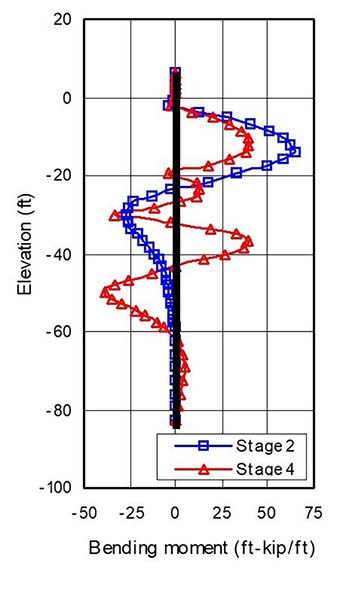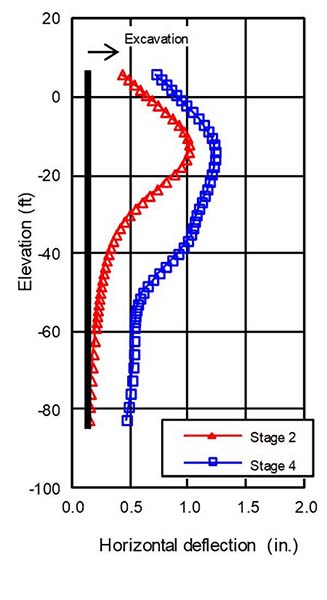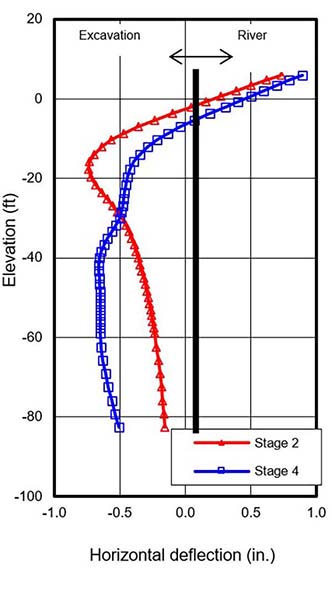Passaic River Deep Braced Excavation Modeling, Newark, New Jersey
Overview: Schoor DePalma planned a deep braced sheet pile excavation to remove contaminated soil and an existing bulkhead along the Passaic River in Newark, New Jersey. GeoStructures provided detailed finite element method (FEM) analysis to model the 65-ft deep braced excavation.
Highlights & Related Services:
Highlights & Related Services:
Support of excavation
Soil-structure interaction analysis
Finite element method (FEM) analysis
The project involved two parallel rows of sheet piles — one driven along the riverside and the other driven 50 ft inland. The riverside sheet piles were to be driven in the water along an existing bulkhead. Excavation to remove contaminated soil, as well as the existing bulkhead, was proposed between the two sheet pile walls to a maximum depth of 65 ft. As the excavation was to proceed, internal bracings (waler and strut system) spaced at 25 ft were to be installed at various depths (as shown in the finite element mesh image). After removal of the contaminated soil, the excavation was to be backfilled to its original grade.
In general, the design of braced excavations is usually performed by empirical methods. Such an approach, however, raises questions about the deformation behavior of the system due the specific setup involved. Application of the finite element method (FEM) to this project, however, bridged the gap in the empirical methods and provided a calibration tool for detailed design optimization.
Plain strain FEM analysis was performed using the SIGMA/W computer program. A linear-elastic soil model was used in combination with an elastic perfectly plastic model having a modified Mohr Coulomb yield criterion. These parameters thus eliminated unrealistic tension behind the sheet piles and initiated yielding.
For each stage of construction, nodal displacements, strains, and stresses from the previous stage were set as the initial state values and then updated based on analysis of the current stage. Removal of materials and dewatering was simulated by excavation elements with internal bracings activated for each stage. Selected profiles of sheet pile bending moment and deflections are shown in the three plots. The FEM analysis resulted in the elimination of a costly tieback along the landside, the removal of two rows of internal bracing tiers, and the reduction of the sheet pile embedment length from 120 ft to 90 ft.
PennDOT Approved Contractor
GeoStructures is now approved as a PennDOT Prequalified Geotechnical Drilling Contractor. ...
2021 Project of the Year
GeoStructures is the proud recipient of the Delaware Valley Geo-Institute 2021 Project of the...
2019 Project of the Year
GeoStructures is the proud recipient of the American Society of Civil Engineers 2019 Project of...
Connect with us.
Providing state-of-the-art geotechnical engineering services with an unwavering commitment to excellence and innovation.




